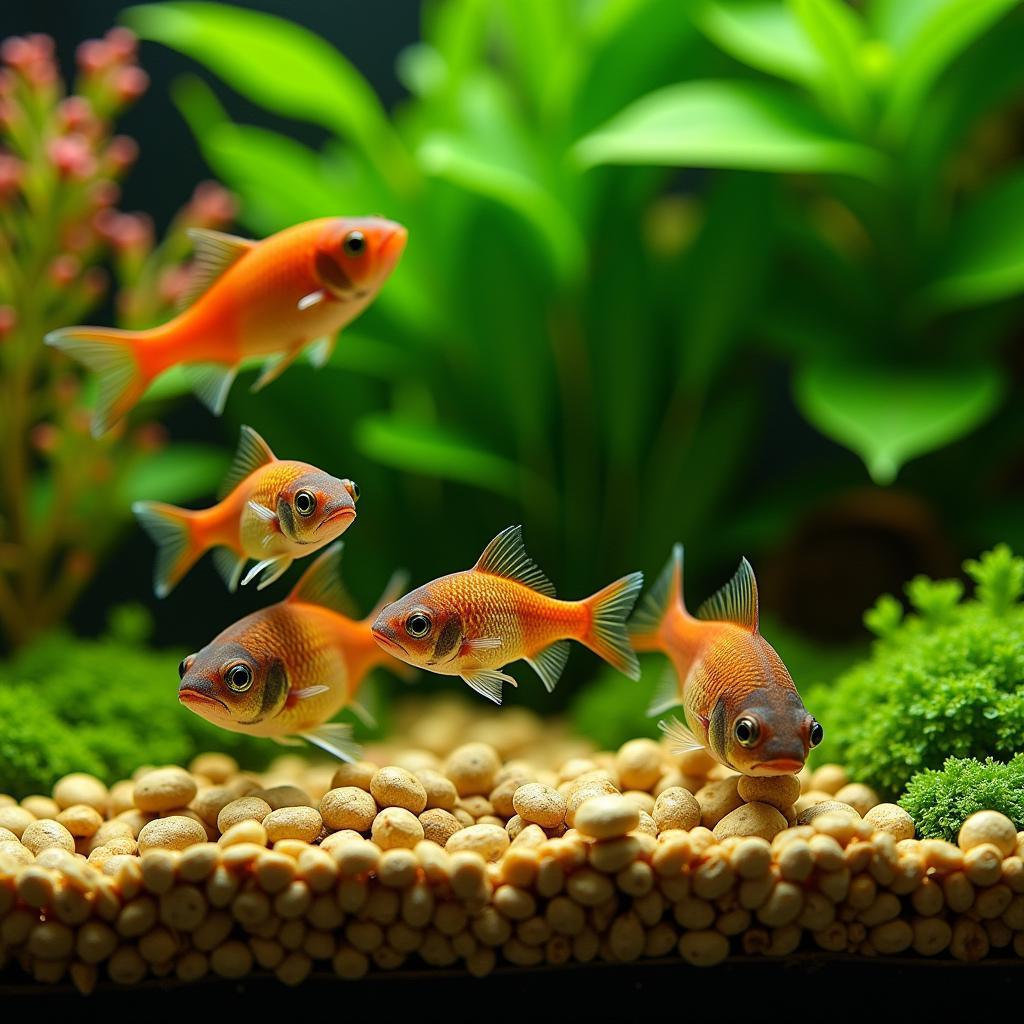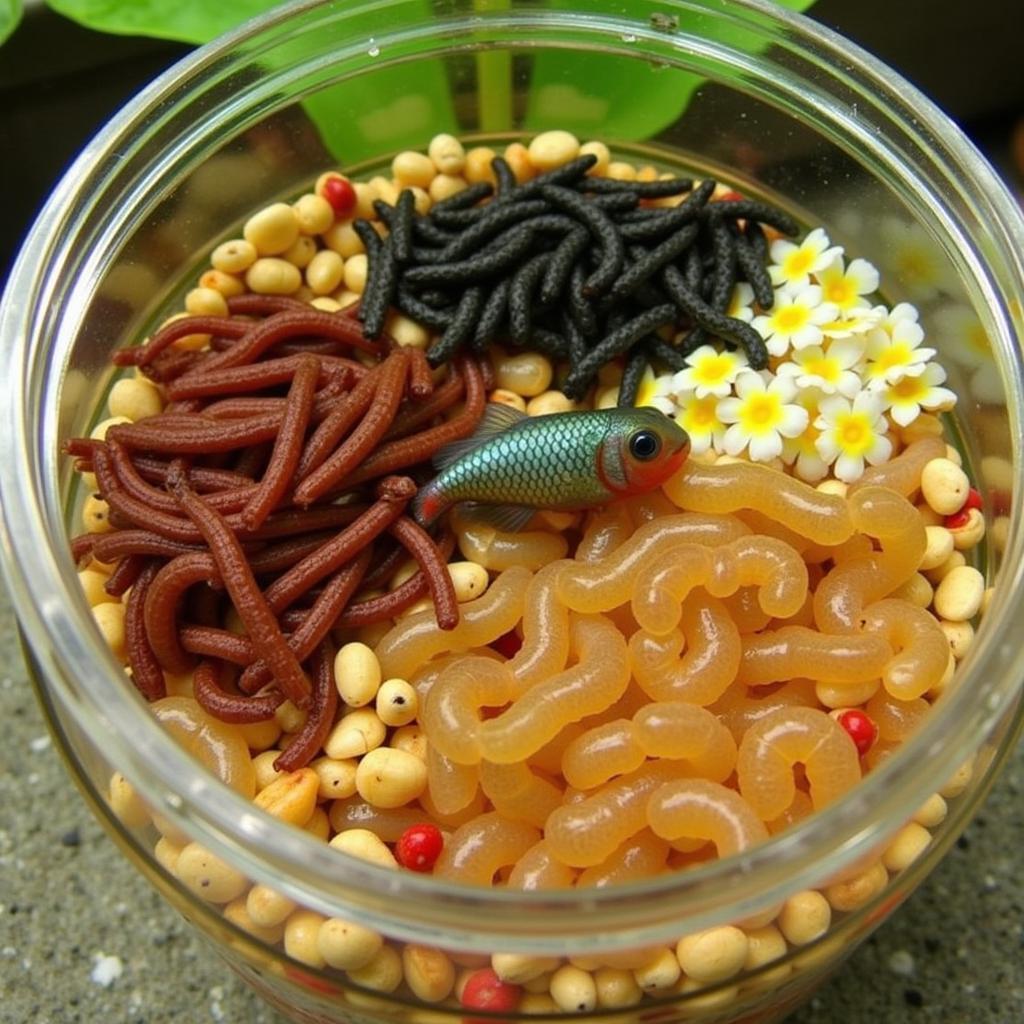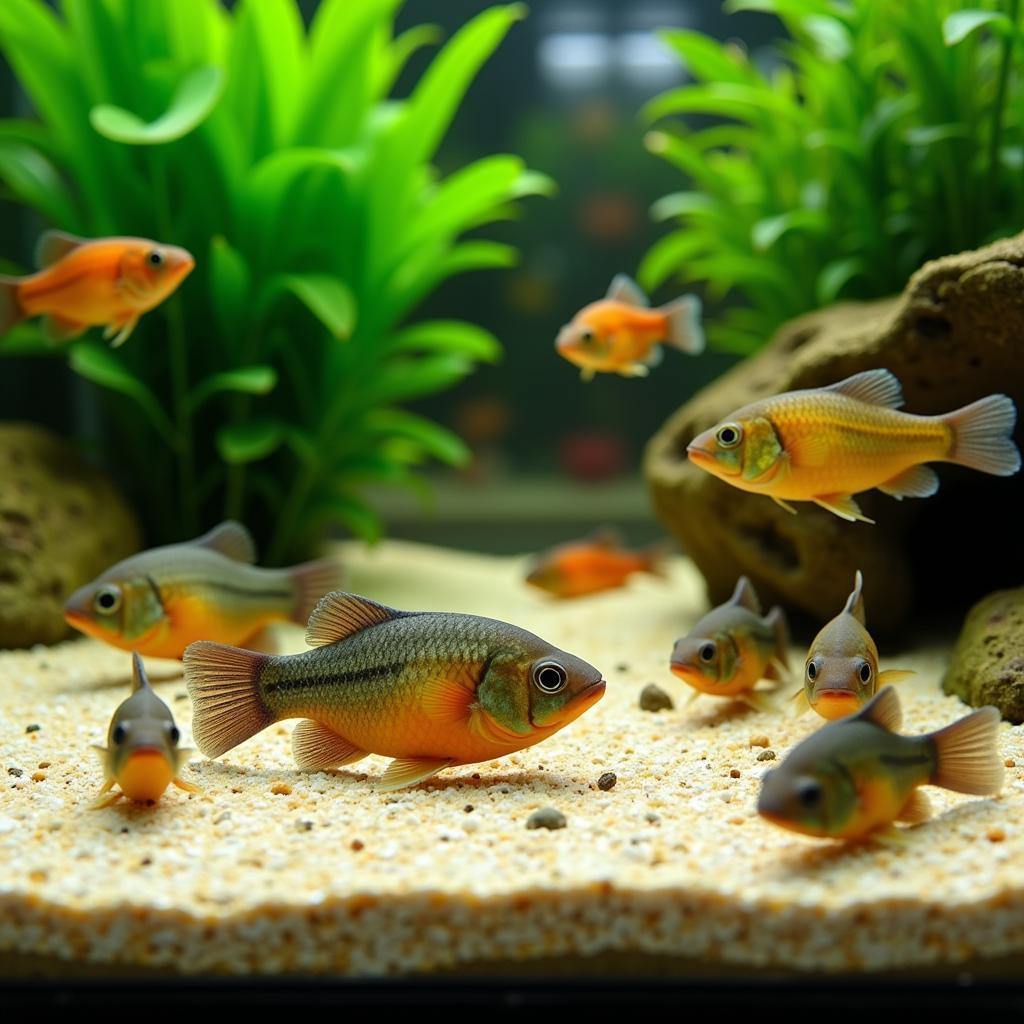Pygmy corydoras are adorable, tiny fish that are a joy to watch in any freshwater aquarium. These peaceful bottom-dwellers are becoming increasingly popular among aquarium enthusiasts, but many new owners wonder, “What exactly do pygmy cory fish eat?”. In this comprehensive guide, we’ll delve deep into the dietary needs of your pygmy corydoras and how to provide them with a healthy, balanced diet.
What do Pygmy Corydoras Eat in the Wild?
In their natural habitat in South America, pygmy corydoras are opportunistic omnivores. This means their diet consists of both plant and animal matter found on the riverbeds they call home. They are natural scavengers, spending their days sifting through the substrate in search of:
- Small insects: Larvae, worms, and crustaceans form a large part of their diet.
- Plant matter: They also consume algae, biofilm, and decaying plant material found on the river bottom.
The Best Diet for Pygmy Corydoras in Aquariums
Replicating their wild diet is key to keeping your pygmy corydoras happy and healthy in your aquarium. Here’s a closer look at the best food options:
1. High-Quality Sinking Pellets
Sinking pellets formulated for bottom-feeding fish are an excellent staple diet for pygmy corydoras. These pellets are packed with protein, vitamins, and minerals that are essential for their growth and well-being.
 Pygmy Corydoras Enjoying Sinking Pellets
Pygmy Corydoras Enjoying Sinking Pellets
2. Frozen and Live Foods
To supplement their diet and provide enrichment, offer your pygmy cories a variety of frozen or live foods a few times a week. Some excellent choices include:
- Bloodworms: A rich source of protein.
- Brine Shrimp: Packed with nutrients and an excellent source of movement to stimulate foraging behavior.
- Daphnia: Small crustaceans that are a good source of protein and fiber.
 Live Foods for a Thriving Pygmy Corydoras Community
Live Foods for a Thriving Pygmy Corydoras Community
3. Vegetables for Pygmy Cories
While their diet is primarily carnivorous, don’t forget that pygmy corydoras benefit from some plant matter. Blanched vegetables like zucchini, spinach, or cucumber, offered sparingly, provide valuable vitamins and can help with digestion.
Tip: Ensure the vegetables are blanched and soft enough for your pygmy cories to consume easily.
4. Avoid Overfeeding
Pygmy corydoras are notorious over-eaters and will happily gobble up any food in sight. However, overfeeding can lead to health problems and poor water quality.
Here’s how to avoid overfeeding:
- Feed only what they can consume in 2-3 minutes.
- Remove any uneaten food after feeding time.
- Observe your pygmy cories for signs of bloating or lack of appetite.
How Often Should I Feed My Pygmy Corydoras?
Feeding frequency depends on the age and size of your fish:
- Adult pygmy corydoras: Feed once a day.
- Juvenile pygmy corydoras: Feed twice a day to support their rapid growth.
 Thriving Pygmy Corydoras in a Well-Maintained Aquarium
Thriving Pygmy Corydoras in a Well-Maintained Aquarium
Expert Insights on Feeding Pygmy Corydoras
We asked renowned aquarist, Dr. Susan Evans, about feeding pygmy corydoras, and here’s what she had to say:
“Variety is key to a thriving pygmy corydoras community. I recommend offering a mix of high-quality sinking pellets, frozen foods, and occasional blanched vegetables. It’s crucial to avoid overfeeding and to monitor their weight and behavior closely.” – Dr. Susan Evans, Aquatic Biologist
Conclusion
Providing your pygmy corydoras with a balanced and varied diet is vital for their health, longevity, and overall well-being. By replicating their natural diet and following the expert advice in this guide, you’ll be well on your way to having a thriving community of these fascinating little fish.
If you have any questions or need further assistance, our expert team at Mina Cones Food is here to help. Contact us at Phone Number: 02437655121, Email: minacones@gmail.com, or visit us at 3PGH+8R9, ĐT70A, thôn Trung, Bắc Từ Liêm, Hà Nội, Việt Nam. We have a 24/7 customer support team.